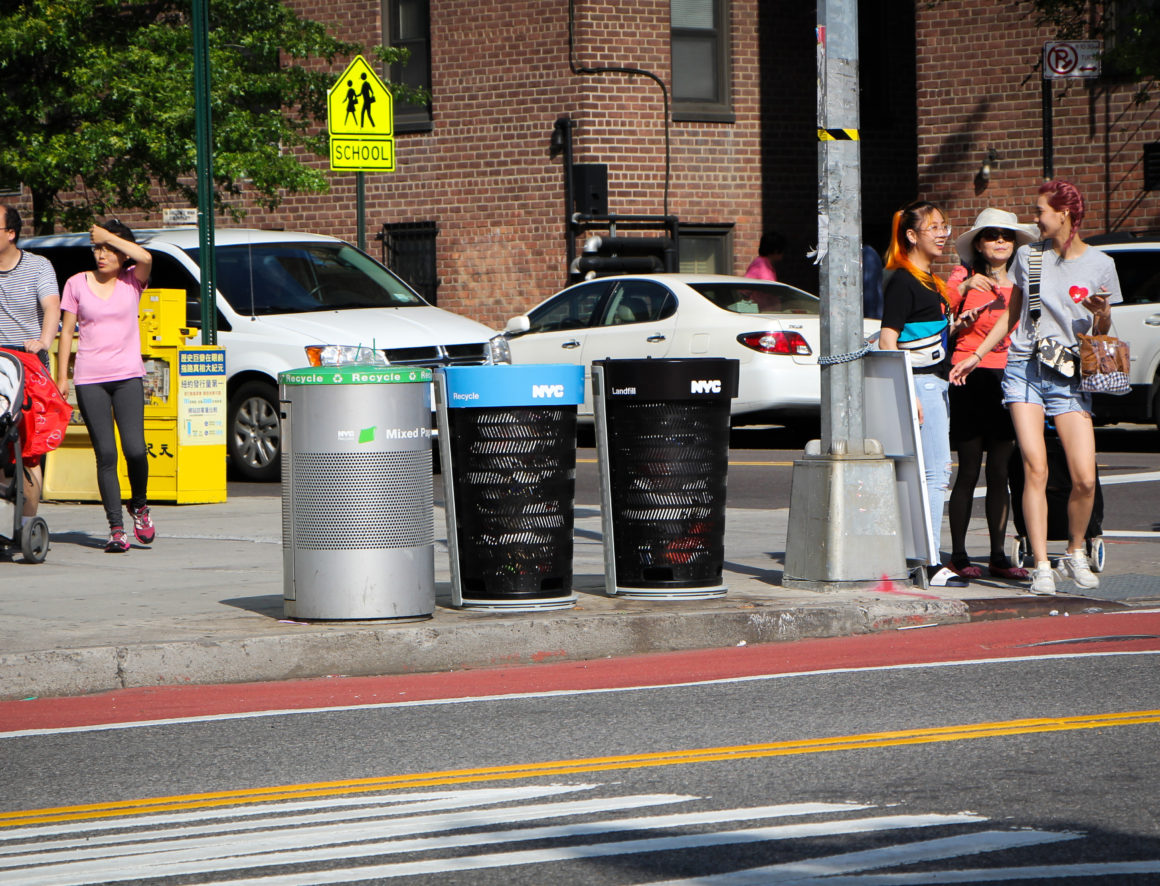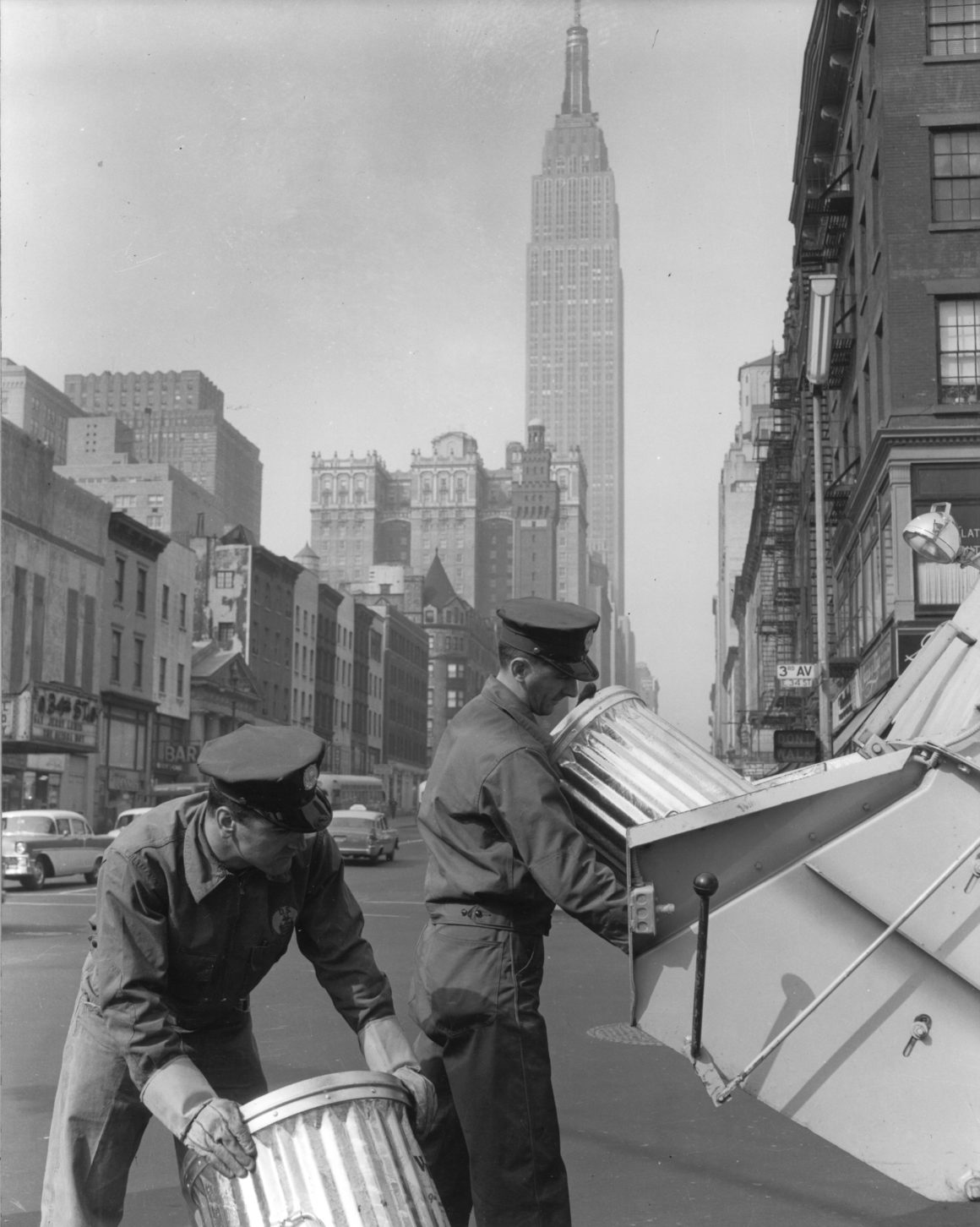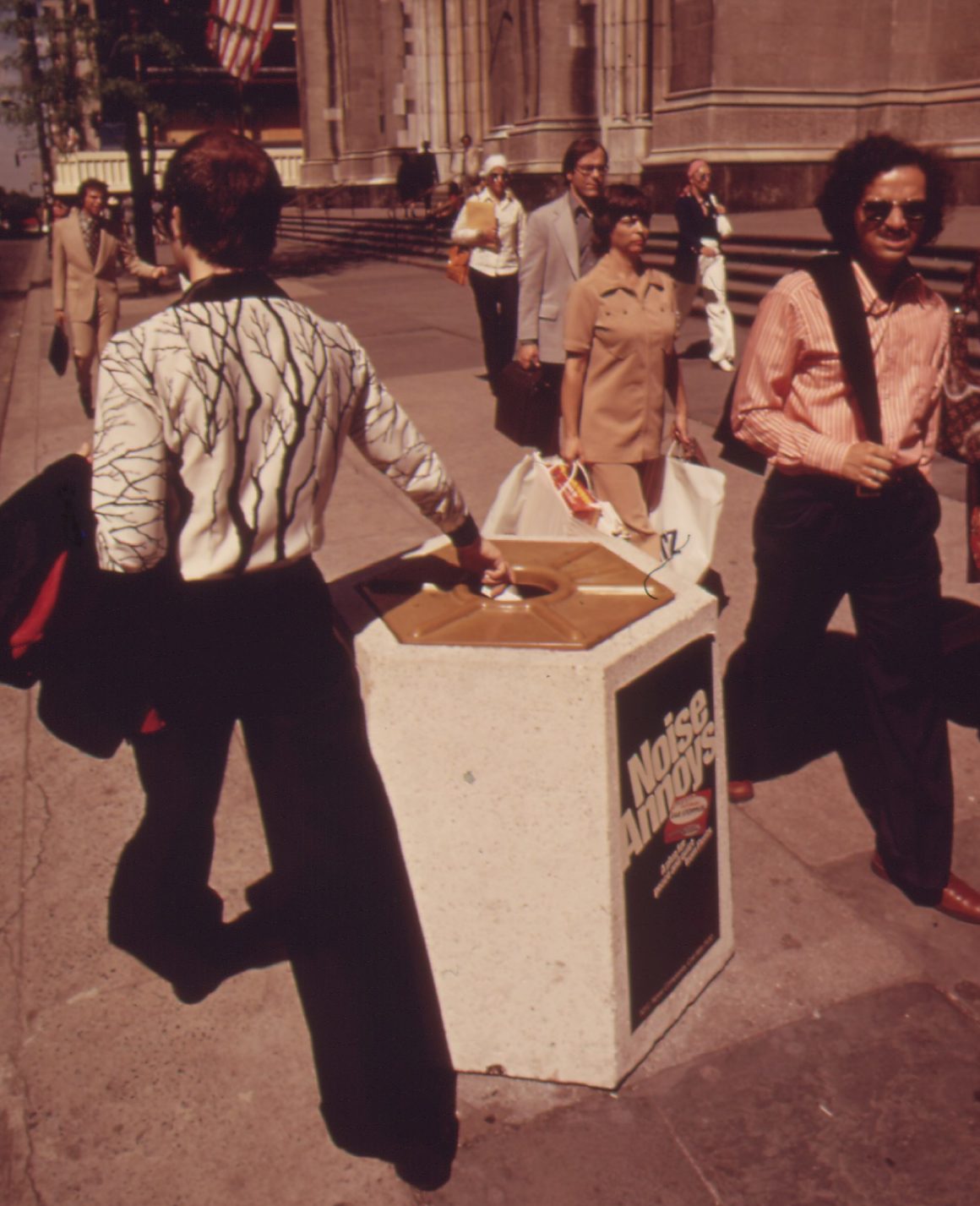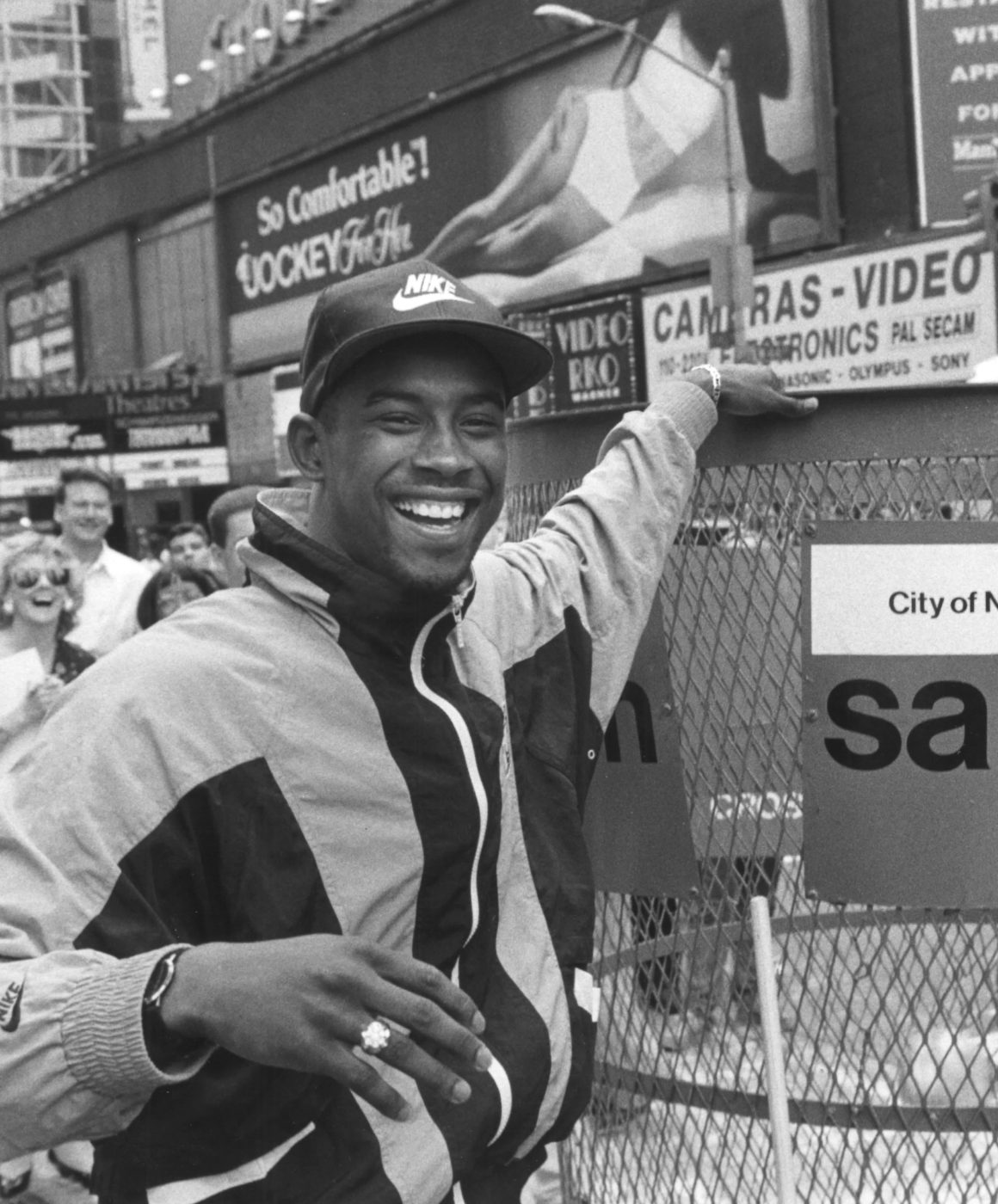
Together with the New York City Department of Sanitation (DSNY), the Industrial Designers Society of America (ISDA), and the American Institute of Architects New York (AIANY), we invited interdisciplinary industrial design teams to reimagine the iconic New York City litter basket.
The competition asks: How can we create a practical and efficient litter basket for New York City that keeps the streets clean, makes the best use of our limited streetscape, and better serves both sanitation workers and the public at large?
To learn more, visit DSNY’s competition website, BetterBin.nyc.
Winner
Group Project, New York, NY
Design Team Members: Colin P. Kelly, Brit Kleinman, Brandon Massey, Chris Glaister
Group Project is an interdisciplinary design team passionate about improving the everyday experiences of urban life. Utilizing diverse backgrounds in architecture, art, industrial design, and engineering, they reframe problems and derive innovative solutions for a more sustainable future. Group Project is thrilled to partner with DSNY, Van Alen Institute, IDSA, and AIANY on developing a litter basket for New York City that will better serve sanitation workers, modernize our streetscape and change the public’s perceptions and behaviors towards waste—with the goal of achieving zero waste by 2030. Their proposal utilizes modularity, complementary materials, and a NYC-inspired aesthetic to achieve a solution that significantly improves the servicing experience, keeps streets clean and orderly, and symbolizes a new future for the New York City Department of Sanitation.
Finalist
Smart Design, New York, NY
Design Team Members: Davin Stowell, James Krause, Dan Grossman, Edward Laganis, Meegan Daigler, Albert Kwak, Grayson Hild
Founded in 1980, Smart Design is a strategic design company based in New York and London. They believe in designing with people, and for people, to create a smarter and more sustainable world. With a rich heritage in humanizing emerging technologies, and unique expertise in bridging the physical and digital, their fundamental goal remains the same: make experiences more intuitive, enjoyable and relevant. From redesigning the New York Taxi to launching category-defining products and services for clients such as Ford, PepsiCo, OXO, Sephora and Samsung, their multi-disciplinary design experts continue to create solutions to our clients’ toughest challenges.
ABOUT THE COMPETITION
July 17, 2018–December 4, 2019
We received nearly 200 submissions from six continents. The finalist teams, selected by an interdisciplinary jury, each received a $40,000 award to produce 12 prototypes. Group Project and Smart Design worked closely with the competition coordinators to refine their designs and produce 12 full-size prototypes. These prototypes were tested in Summer 2019 in Manhattan (9th Avenue between 43rd and 45th Streets), Queens (Main Street between Maple and Cherry Avenues), and the Bronx (Castle Hill Avenue between Newbold and Ellis Avenues).
Held in July 2018, the BetterBin Open House was an opportunity for potential competition entrants to interact with existing litter basket designs, learn more about the competition, and talk to Sanitation Workers about what it’s like to service litter baskets on the streets of New York City. A summary of questions and answers from the event have been posted on BetterBin.nyc.
JURY
Proposals in both stages of the competition were reviewed by a jury representing expertise across the worlds of sanitation, business, design, and public art:
Keri Butler, Deputy Director, Public Design Commission
Vijay Chakravarthy, Northeast District Chapter Representative, IDSA
Kathryn Garcia, Commissioner, The City of New York Department of Sanitation
Jeff Kapec, Executive Vice President, Tanaka/Kapec Design Group, Inc., Visiting Professor, Pratt Institute
David van der Leer, Principal, DVDL Design Decisions
Cara McCarty, Director of Curatorial, Cooper Hewitt, Smithsonian Design Museum
Victoria Milne, Principal, 6¢ Design
Harry Nespoli, President, Uniformed Sanitation Men Association
Heron Preston, Designer
SELECTION CRITERIA
Stage I submissions were evaluated according to the following criteria:
- 50% – Responsiveness to competition goals
- 25% – Technical review of manufacturing feasibility
- 25% – Originality, innovation, and design quality of the submission
Stage II Finalists were evaluated according to the following criteria:
- 50% – Prototype basket performance during prototype testing
- 25% – Public comments received during the prototype testing
- 25% – Feedback from Department of Sanitation employees during the
prototype testing.
DESIGN REQUIREMENTS
1. QUALITY OF LIFE AND AESTHETICS
The ideal design should aim to improve the quality of life, street cleanliness, and appearance of street corners across the City. An overflowing, unsightly, or damaged litter basket invites misuse and attracts rodents. Designs should have proper drainage to allow for fluid and rainwater egress, and minimize rodent access through the bottom or sides.
The ideal design is simple and enduring, equally at home on any street in any borough, with the ability to stay relevant in a modern city alongside other sidewalk innovations for the next 100 years.
2. PROPER USE
Public space litter and recycling baskets are intended for pedestrians to dispose of light refuse and recycling. It is against the law to put household waste, business waste, or street sweepings in a litter basket (these actions are subject to a $100 fine). Designs should discourage improper use of litter baskets.
3. ACCESSIBILITY
A litter basket should be easily identified as a place to deposit waste on the go, and should be convenient and accessible to all New Yorkers. Designs should be compliant with the Americans with Disabilities Act (ADA) and should not require pedestrians to physically touch the basket in order to dispose of waste.
4. SUSTAINABILITY AND STEWARDSHIP
The ideal design has the potential to make a significant positive impact on the environment. Ideally the design itself should set a new benchmark for sustainable design and help contribute to a better and more sustainable future. Recycled materials, innovative fabrication methods, and/or technologies applied in a clever, imaginative, and original way, are welcome. The design must be able to be easily reconfigured or repurposed for use as a recycling bin, and must accommodate sustainability messaging.
5. SERVICING
The City’s litter baskets are emptied daily, sometimes more than once a day, by Sanitation Workers. Servicing typically includes lifting and dragging baskets between the curb and the truck. Litter baskets must weigh no more than 32 pounds when empty. The ideal grip features, dimensions, capacity, and overall design should apply best practices in ergonomics for lifting and dragging and should be able to be serviced quickly and effectively without injury.
6. COST, DURABILITY, AND EASE OF MAINTENANCE
The design is intended as a replacement for the current low-cost, high-durability, stackable steel mesh litter basket. Current steel mesh litter baskets experience significant wear and tear over the course of a typical 2.5-3 year lifespan where a basket may be serviced nearly 2,650 times. The basket must be durable enough to withstand daily use, frequent servicing, variation in waste materials, and all temperatures, weather, and wind conditions.
Proposed designs should not exceed a maximum cost per basket at scale (20,000 units) of $175 per unit with an anticipated lifecycle of 2,500 service cycles, and may exceed $175 only with a proportional increase in durability.
7. SECURITY
Litter baskets in New York City are removed by DSNY for special events or for NYPD security operations. A stackable design enables easy storage and transport when needed. Designs must be conscious of and minimize risks associated with misuse of public space infrastructure. The basket should be freestanding and may not be designed in a way that requires it to be affixed to the sidewalk, or permanently attached to any other element of the streetscape.



COMPETITION PARTNERS
New York City Department of Sanitation
The Department of Sanitation (DSNY) keeps New York City healthy, safe and clean by collecting, recycling and disposing of waste, cleaning streets and vacant lots, and clearing snow and ice. The Department operates 59 district garages and manages a fleet of more than 2,000 rear-loading collection trucks, 450 mechanical brooms and 693 salt/sand spreaders. The Department clears litter, snow and ice from approximately 6,500 miles of City streets and removes debris from vacant lots as well as abandoned vehicles from City streets.
nyc.gov/sanitation
Industrial Designers Society of America
Founded in 1965, the nonprofit Industrial Designers Society of America (IDSA) is one of the oldest and largest industrial design associations, representing thousands of members in dozens of Student Chapters, Professional Chapters and Special Interest Sections in the United States and internationally. Its mission is to promote the practice of industrial design through education, information, community and advocacy. IDSA sponsors the annual International Design Excellence Awards® (IDEA), the world’s most prestigious and rigorous design competition. The Society hosts events including an annual International Design Conference, five District Design Conferences and niche conferences, bringing together some of the biggest names and brightest minds in industrial design and related fields.
IDSA.org
AIA New York
AIA New York is the oldest and largest chapter of the American Institute of Architects with over 5,500 members. To fulfill its goals of design excellence, public outreach, and professional development, the chapter organizes initiatives, programs and exhibitions that explore topics vital to the profession, including housing, planning, historic preservation, and urban design.
AIA New York shares a home with the Center for Architecture, the premier cultural venue for architecture and the built environment in New York City. The current exhibition at the Center for Architecture, Designing Waste: Strategies for a Zero Waste City, explores how we manage waste in our buildings and neighborhoods, and how design can help New York City achieve its zero waste goal. The exhibition is based on the Zero Waste Design Guidelines, a resource developed by the AIANY Committee on the Environment and the Center for Architecture, with support from The Rockefeller Foundation, to help designers, building operators, and planners reduce waste and increase diversion rates for recyclables.
AIANY.org











